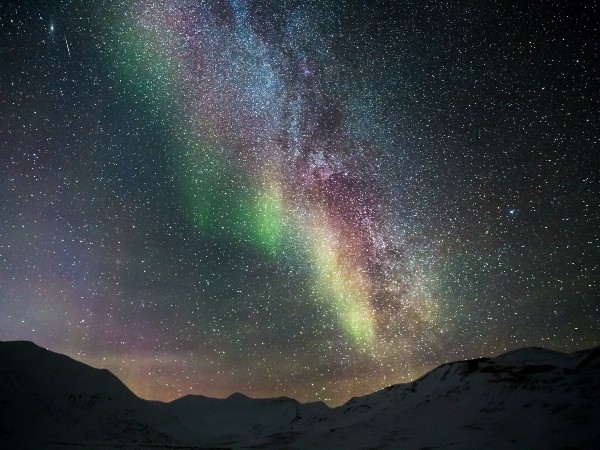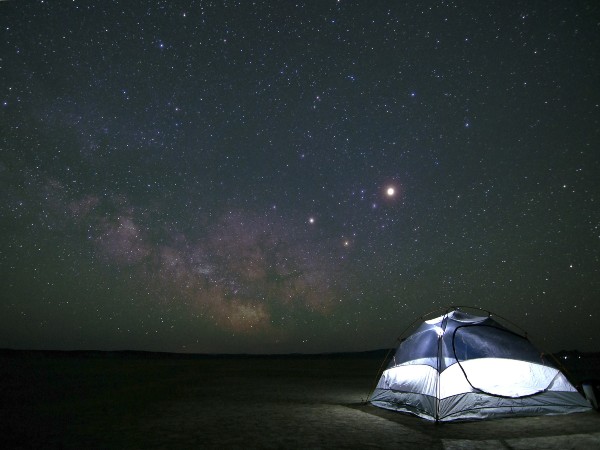[ad_1]

You might not be able to stop yourself to mark your presence at Hanle in Ladakh if you are a space enthusiast and have an interest in the beautiful skies, stars, the milky way, etc. Here’s what can make you more excited about visiting Hanle. “The Changthang Wildlife Sanctuary’s six hamlets, Khuldo, Punguk, Bhok, Shado, Naga, and Tibetan Refugee Habitations, are now officially designated as the Hanle Dark Sky Reserve.”
Hanle, in Ladakh, has been designated by the administration of the Union Territory of Ladakh as the country’s first dark sky reserve. This region spans 1,073 square kilometers, and it will be called the Hanle Dark Sky Reserve (HDSR).
The six hamlets of Bhok, Shado, Punguk, Khuldo, Naga, and Tibetan Refugee habitations within Changthang Wildlife Sanctuary collectively constitute a cluster or an area that has been officially accepted as the Hanle Dark Sky Reserve.
At India’s first Dark Sky Reserve, there will be several lighting limitations, such as covering windows and doors with curtains and limiting the use of artificial lighting inside and on vehicles. A location must be accessible for most of the year and to the general public to be considered a dark sky reserve.
 Best offbeat destinations to visit in North India during Winter
Best offbeat destinations to visit in North India during Winter
What is Dark Sky Reserve?
A region or piece of land that has measures in place to ensure that artificial light interference is kept to a minimum is known as a “Dark Sky Reserve.” Depending on the requirements, the International Dark Sky Association, a non-profit organization with U.S. headquarters, recognizes locations as International Dark Sky Places, Parks, Sanctuaries, and Reserves.

A “core” area for a dark sky reserve must have a pristine sky free of light pollution so that telescopes may view the sky in its natural darkness. The center should be surrounded by a “peripheral” or “buffer” area that preserves dark sky values while providing the same advantages to support it.
Any piece of land may only be considered a dark sky area if it is either publicly or privately owned land and is regularly accessible to the public. Such property is legally reserved for the advancement of science, the study of nature, education, culture, heritage, and/or the enjoyment of the general public.
In comparison to the towns and cities that surround the such area, the land’s core region offers an extraordinary dark sky resource, and the land provides the required night sky brightness for a reserve, park, or sanctuary. By the International Dark Sky Association, this certification is offered (IDSA).
 Best cities to celebrate New Year 2023 for party animals, have a look!
Best cities to celebrate New Year 2023 for party animals, have a look!
What are the Key features of the Dark Sky Reserve in Ladakh?
- A Memorandum of Understanding (MOU) was signed by the government of the Union Territory, the Ladakh Autonomous Hill Development Council (LAHDC), Leh, & the Indian Institute of Astrophysics (IIA), Bengaluru, that operates and maintains the telescopes, for the establishment of the Dark Reserve.
- Dark Sky Reserve in Ladakh will include initiatives that will use science and technology to assist grow the local economy and tourism.
- The villages near Hanle will be urged to advertise homestays with telescopes so that guests can observe the stars at night to develop astronomy tourism.
- Additionally, locals and villagers will receive training to assist guests with astronomical observations.
- People are welcome in the Dark Sky Reserve to visit, park, watch the stars, and stay in homestays.
- Additionally, a visitor center would be built to educate visitors about astronomy as well as the nearby Changthang Wildlife Sanctuary’s animal and plant life.

About Hanle:
Hanle is a little town located around 270 kilometers southeast of Leh in the Changthang area. The Drukpa Kagyu branch of Tibetan Buddhism’s Hanle Monastery, built in the seventeenth century, is located there.
Only the Indian Astronomical Observatory was available to Hanle before. But now, Hanle is surrounded by a 1,073 km2 dark sky reserve, making it the ideal location for astronomy enthusiasts.
It is one of the best locations in the world for optical, infrared, sub-millimeter, & millimeter wavelengths due to the clear skies and very little atmospheric water vapour. Hanle is quite close to the Line of Actual Control, so in addition to other special permits, one needs to obtain an Inner Line Permit to visit.
The Hanle Observatory is home to notable telescopes like the Himalayan Chandra Telescope (HCT), Major Atmospheric Cherenkov Experiment Telescope (MACE), High Energy Gamma Ray Telescope (HAGAR), and GROWTH-India.
Best time to visit Hanle:
Hanle experiences mostly clear skies all year long. At 4,500m, the winters are extremely cold, with lows of -20°C, yet there is hardly any snowfall. The greatest time to go is from March to October, when the weather is more tolerable, the nights are still clear, and the Milky Way is more clearly visible.
How to reach Hanle, Ladakh:
Hanle is around 270 kilometers to the southeast of Leh and takes approximately 7-8 hours to travel by car. Hanle is higher at 4,500m or 14,700ft than Leh, which is at 3,500m or 11,480ft. From Leh to Hanle, you can choose to drive. There are a variety of routes you can take, depending on the weather and road conditions. These routes are Leh to Hanle through Chumathang which is approximately 114 Kilometers and Leh to Hanle through Pangong Tso which is approximately 176 Kilometers.
[ad_2]
Source link
